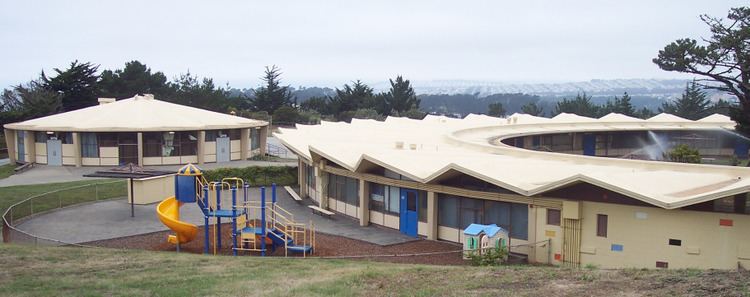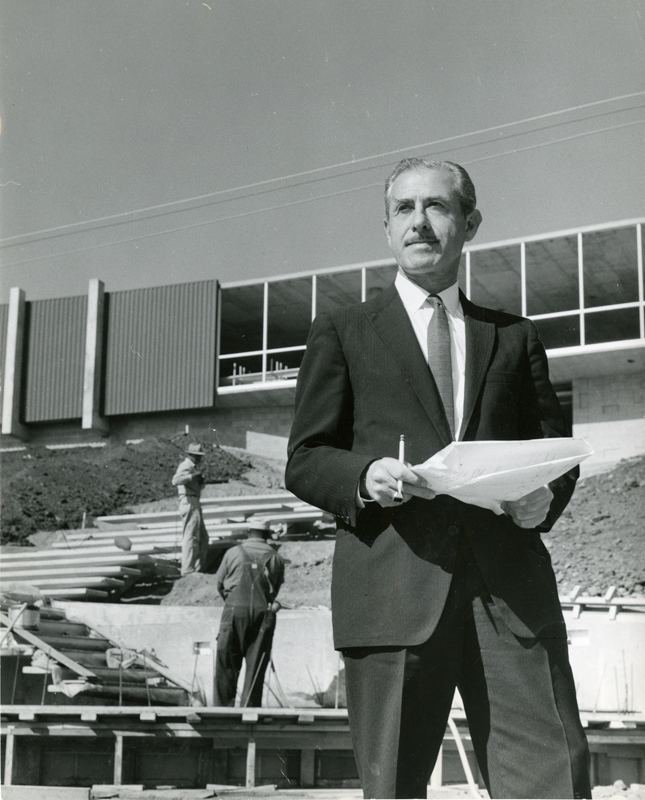Nationality American Role Architect Name Mario Ciampi | Practice M.J.C. and Associates Occupation Architect Education Harvard University | |
 | ||
Buildings Berkeley Art Museum, 1970 Structures | ||
Mario Joseph Ciampi (April 27, 1907 – July 6, 2006) was an American architect and urban planner best known for his modern design influence on public spaces and buildings in the San Francisco Bay Area.
Contents

Biography
Ciampi's parents emigrated from Italy to California in 1906. Guido and Palmira Ciampi travelled on the SS Deutschland from Genoa, arriving at Ellis Island, New York on 3 March 1906. They had friends in San Francisco and arrived there just in time for the great San Francisco earthquake of April 18. The devastation caused by the earthquake and subsequent fire forced them to live in an Army issue tent on the Presidio for several months. Mario was born in San Francisco twelve months after the fire, on 27 April 1907.
Soon afterwards the family moved to Schellville, California near Sonoma, where Guido became a farmer. The farm had vegetables, fruit trees, animals, and a vineyard which eventually earned bonded winery status. As teenagers, Mario with his brothers Paul and Joe worked on the family vineyard and made extra money making wooden shipping crates for the neighboring Sebastiani Winery.
"From an early age he precociously sketched buildings for fun, and later seriously for Sonoma Valley friends and neighbors, but there was no money to send him to architecture school. So he entered the profession in the old way -- old-fashioned even in 1925 -- by going straight from high school to an apprenticeship in the San Francisco firm of Alexander Cantin and Dodge A. Riedy, who had worked on the great Pacific Telephone Building with Timothy Pfleuger.
"Working as a draftsman by day and taking night classes at the San Francisco Architectural Club..., Ciampi soon became a remarkable delineator in the Beaux Arts manner. Like almost all architects of his generation, he was still an eclectic, inspired by historic styles….
"Drawings of this quality won him successive scholarships to the Harvard Graduate School of Design, where he was admitted in 1931 and 1932 as a special student (because he had no bachelor's degree).
"He returned to San Francisco after a stint at the Ecole des Beaux-Arts and an extensive tour of Europe under a traveling fellowship arranged by Harvard."
Ciampi founded his design firm, M.J.C. and Associates, in 1945. Professional works of Mario Ciampi include the design and construction of university buildings, schools, churches, and commercial buildings including joint ventures with architectural organizations and collaboration with painters, sculptors and artists. He was commissioned to develop the Downtown Plan for San Francisco in 1963 including beautification of Market Street, Embarcadero, Halladie, and United Nations Plazas. Much of his work was completed under the administrations of Christopher, Shelley, Alioto, Moscone, and Feinstein administrations.
Ciampi was the urban design consultant for the Golden Gateway, Embarcadero Plaza, Rockefeller Center, Fisherman's Wharf, Yerba Buena Center, and freeway study for San Francisco with CAL TRANS. He developed the master plans for the University of Alaska, Fairbanks, and St. Mary's College, Moraga.
"Probably his most important achievement -- prototypically Modern in its 'rational' elegance -- is the breathtaking series of 'air foil' overpasses and interchanges along Interstate 280 [California] as it winds down the Peninsula.
"Designed in 1965, after public protest compelled state highway engineers to seek outside help for aesthetics, Ciampi's streamlined concrete structures … transformed a crude preliminary scheme into one of the most gracious freeways in the world."
"Mario Ciampi, FAIA, architect of the extraordinary Berkeley Art Museum, designed numerous innovative schools in the late 1950s and 1960s. Among them are the Westmoor School, with its precast concrete barrel vaults spanning sixty feet; the Fernando Rivera Elementary School, with a prefabricated wood folded plate roof; and the circular Vista Mar School, all in Daly City; and an elementary school for Ciampi's hometown of Sonoma. All are characterized by novel structural systems integrating clerestory lighting, leaving large wall surfaces that incorporate significant artwork in relief."
In 1959, Ciampi received two honor awards from the American Institute of Architects, out of five awards given during that year. "San Francisco architect Mario J. Ciampi's two schools, the Sonoma Elementary School in Sonoma and the Westmoor High School, Daly City [were] named among five buildings to get First Honor Awards from the American Institute of Architects. He was the only architect to get two top winners and the only one from Northern California to be named in this category or in the Awards of Merit."
Ciampi won the AIA honor award for the Junipero Serra Overpass for Highway 280 near San Francisco, CA.
Ciampi won AIACC’s 25-Year Award in 1996 for the Berkeley Art Museum. The AIACC also awarded Ciampi their Maybeck Award in 2000 recognizing his entire body of work.
The cover of Fortune magazine October 1958 featured one of Mario Ciampi's award winning schools.
Mario Ciampi received the National Award AIA for construction of plazas and beautification of Market Street, San Francisco. Additionally, he received a Certificate of Appreciation from the Board of Supervisors for the Urban development of Market Street. He received the first Albert J. Exers Award for Urban Design, San Francisco and was the winner of the San Francisco Art Festival Prize with a lifetime exhibition in 1970.
He died age 99 on July 6, 2006, of heart failure in San Rafael, California. Mario Ciampi was survived by his wife, Carolyn Ciampi of Kentfield, and his nephew, Norman Ciampi of Novato.
The Berkeley Art Museum was opened in 1970 at the UC Berkeley campus with "raw shells of rectangular concrete reflecting the style known as Brutalism, a short-lived architectural style that fell out of favor almost as soon as it arrived on the scene." The closing day of the museum was Sunday, December 21, 2014, and the future of the building is uncertain. The City of Berkeley declared it to be a landmark in 2012.
Education
Ciampi's education in the field of architecture included:
